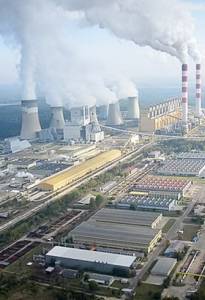Description
Power Plants: Generating the Future of Energy
Power plants are the backbone of modern civilization, converting various energy sources into electricity to power our homes, businesses, and industries. This comprehensive overview explores the diverse types of power plants, their operational principles, environmental impacts, and future trends.
Types of Power Plants:
We offer detailed information on the following power plant types:
- Fossil Fuel Power Plants (Coal, Oil, and Natural Gas):
- Description: These plants utilize the combustion of fossil fuels to generate steam, which drives turbines connected to generators. We cover the various combustion technologies, including pulverized coal, fluidized bed combustion, and gas turbines.
- Pros: Established technology, relatively high power output, readily available fuel (historically).
- Cons: Significant greenhouse gas emissions, air pollution, reliance on finite resources, high operational costs (increasingly).
- Learn More: [Link to a relevant article/resource about fossil fuel power plants]
- Nuclear Power Plants:
- Description: These plants utilize nuclear fission to generate heat, producing steam that drives turbines. We explore different reactor designs, including pressurized water reactors (PWRs) and boiling water reactors (BWRs), along with safety features and waste management strategies.
- Pros: High power output, low greenhouse gas emissions during operation, reliable baseload power.
- Cons: Nuclear waste disposal challenges, potential for accidents, high initial investment costs, public perception concerns.
- Learn More: [Link to a relevant article/resource about nuclear power plants]
- Renewable Energy Power Plants:
- Solar Power Plants (Photovoltaic and Concentrated Solar Power): We discuss photovoltaic (PV) panels converting sunlight directly into electricity and concentrated solar power (CSP) systems using mirrors to focus sunlight onto a receiver.
- Wind Power Plants: We explore the various wind turbine designs and their optimal placement for maximum energy capture.
- Hydroelectric Power Plants: We cover the different types of hydroelectric plants, including impoundment, run-of-river, and pumped storage, and their environmental considerations.
- Geothermal Power Plants: We examine how geothermal energy harnessed from the Earth's heat is used to generate electricity.
- Biomass Power Plants: We discuss the use of organic matter to generate energy through combustion or gasification.
- Pros: Renewable resources, reduced greenhouse gas emissions, sustainable energy sources.
- Cons: Intermittency (solar and wind), geographical limitations, environmental impact (hydroelectric, biomass).
- Learn More: [Link to a relevant article/resource about renewable energy power plants]
Key Considerations:
- Environmental Impact: We analyze the environmental footprint of various power plant technologies, including greenhouse gas emissions, air and water pollution, and land use.
- Economic Aspects: We discuss the capital costs, operating costs, and economic benefits of different power plant types.
- Grid Integration: We explore the challenges and solutions related to integrating intermittent renewable energy sources into the electricity grid.
- Future Trends: We examine the emerging technologies and innovations in power generation, including advanced nuclear reactors, next-generation solar cells, and energy storage solutions.
Who This is For:
This information is valuable for students, researchers, policymakers, engineers, investors, and anyone interested in learning about the complex world of power generation and the future of energy.
Get Started:
Explore the different power plant types above to learn more about the technology, advantages, and challenges of each. We are committed to providing accurate, up-to-date information to empower informed decisions about our energy future.
